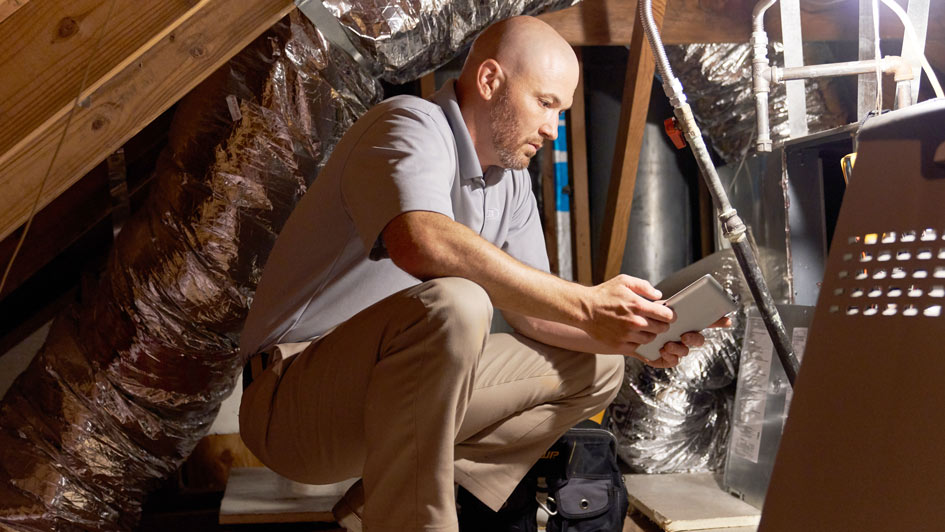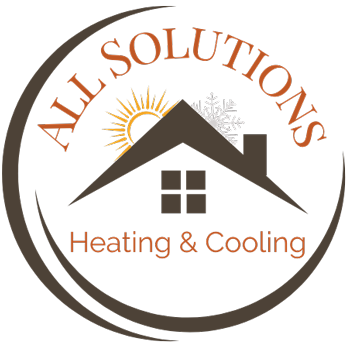
Did you know that more than 50 percent of your home’s energy costs are needed for your heating and cooling? This is the reason why it’s essential to maintain an energy-efficient HVAC system.
Furnace efficiency standards were last revised to an Annual Fuel Utilization Efficiency (AFUE) rating of 80% in 2015. This rating system calculates how effective your furnace is at converting natural gas into heat. An AFUE rating of 80% means your furnace loses about 20% of the fuel it uses while producing heat.
In 2022, the U.S. government revealed new energy-efficiency standards for residential gas furnaces that would significantly decrease emissions, save money and stimulate sustainability.
The updated standards are expected to:
- Save Americans $1.9 billion annually.
- Reduce carbon emissions by 373 million metric tons and methane emissions by 5.1 million tons over 30 years, the equivalent of what 61 million homes emit annually.
Starting in 2029, the proposed rule would require all new gas furnaces to feature AFUE ratings of 95%. This means furnaces would turn nearly 100% of the gas into usable heat.
With these facts in mind, you may be asking yourself "what happens to my existing furnace"? For the time being, next to nothing, as the proposed rule wouldn’t go into effect until 2029 at the earliest and doesn’t affect furnaces that are already in use.
But if you are considering furnace replacement in soon, highly energy-efficient furnaces are now available. Find out how these furnaces can help you save on energy bills now.
Guide to Condensing Furnaces
How Condensing Furnaces Work
A condensing furnace is a type of heating system that uses a secondary heat exchanger to capture wasted heat from the furnace's exhaust gases. This decreases the quantity of energy wasted, enhances energy efficiency and lowers CO2 emissions. It also demands less natural gas to create the same volume of heat when compared to other types of furnaces.
How Condensing Furnaces Differ from Non-Condensing Furnaces
The primary difference between a condensing furnace and a non-condensing furnace is that the former uses a secondary heat exchanger to collect any wasted heat from its exhaust gases, while the latter does not.
Expected Longevity of a Condensing Furnace
The life span of a condensing furnace will depend on the brand, model and other factors. In most cases, a condensing furnace is likely to last between 10-20 years with proper maintenance and regular service. If you don’t schedule routine maintenance, it may not last as long.
Why Condensing Furnaces Require a Higher Investment
For the most part, condensing furnaces type of system is significantly more efficient than conventional furnaces, as it only uses the minimum amount of energy needed to heat your home, resulting in more savings on your utility bill.
Most variable-speed furnaces are condensing furnaces, although some are available in non-condensing models with lower AFUE ratings. If a manufacturer wants a furnace to be classified as a condensing furnace, it must offer an AFUE rating of 90% or higher.
Do Variable-Speed Furnaces Run Nonstop?
A variable-speed furnace doesn’t operate all the time. Instead, it runs at different speeds based on the temperature in your Beaverton home as well as the amount of energy it needs to sustain that temperature.
When sufficient energy is demanded to maintain your set temperature level, the furnace will shift to a higher speed to handle the demand. This allows for more efficient heating in your home while also offering quieter operation.
Guide to Two-Stage Furnaces
Two-Stage Furnaces: What They Are and How They Work
A two-stage furnace is a type of heating system that utilizes two different stages of operation — high and low. On the low stage, the furnace operates at a reduced capacity as a way to maintain the desired temperature for your home more efficiently. During the high stage, the furnace will instead run at maximum capacity to meet demands for increased heat. With a two-stage furnace, you can maintain improved energy efficiency and consistent temperatures everywhere in your home.
While two-stage furnaces are very efficient, not all all models are condensing furnaces.
Does a Two-Stage Furnace Function All the Time?
A two-stage furnace won’t run all the time. In the low stage of operation, the furnace runs at diminished capacity in order to retain a preferred temperature more efficiently within your home. When additional energy is needed to maintain the set temperature, the heating system shifts to its high stage and runs at full capacity. As such, two-stage furnaces are proven to help reduce energy costs without operating continuously.
Differences Between Two-Stage and Variable-Speed Furnaces
Two-stage furnaces have two stages of functionality, low and high. During the low stage, the furnace runs at reduced capacity in order to maintain a desired level of comfort within your home. When additional warmth or cooling is desired, the furnace will switch to its high stage and operate at full capacity.
Variable-speed furnaces, meanwhile, can work at several speeds in order to uphold a more precise temperature at home. Such precise functionality can also help reduce energy costs, as it is not constantly running on full power like many two-stage furnaces do.
Differences Between One- and Two-Stage Furnaces
One-stage furnaces have a single stage motor and operate either at full capacity or not at all. In other words, the furnace is always running in order to maintain a desired level of comfort within your home.
Two-stage furnaces, by comparison, have two stages of operation, low and high. During the low stage, the furnace runs at reduced capacity in order to maintain the desired temperature more efficiently. When more warmth or cooling is necessary, the furnace will shift to its high stage and operate at peak capacity.
Make Your Furnace Installation Appointment with All Solutions Heating & Cooling Today
Modern furnace technology can be confusing. That’s why All Solutions Heating & Cooling experts are here to help with a no-obligation, no-pressure estimate for furnace installation. We’ll assess your home, your heating needs and your budget before helping you find the best solution. Contact us at 971-245-2459 to get started today!



